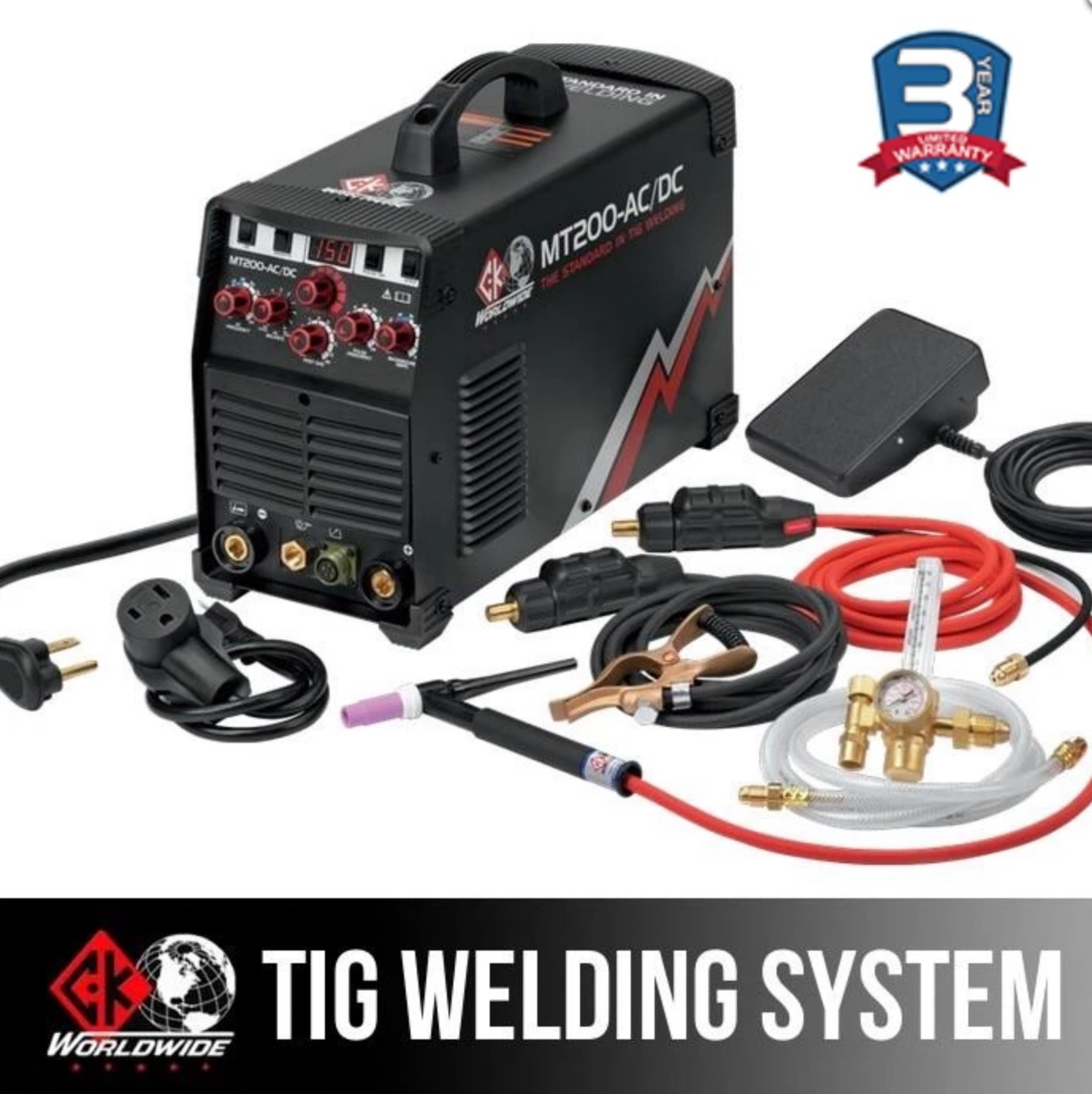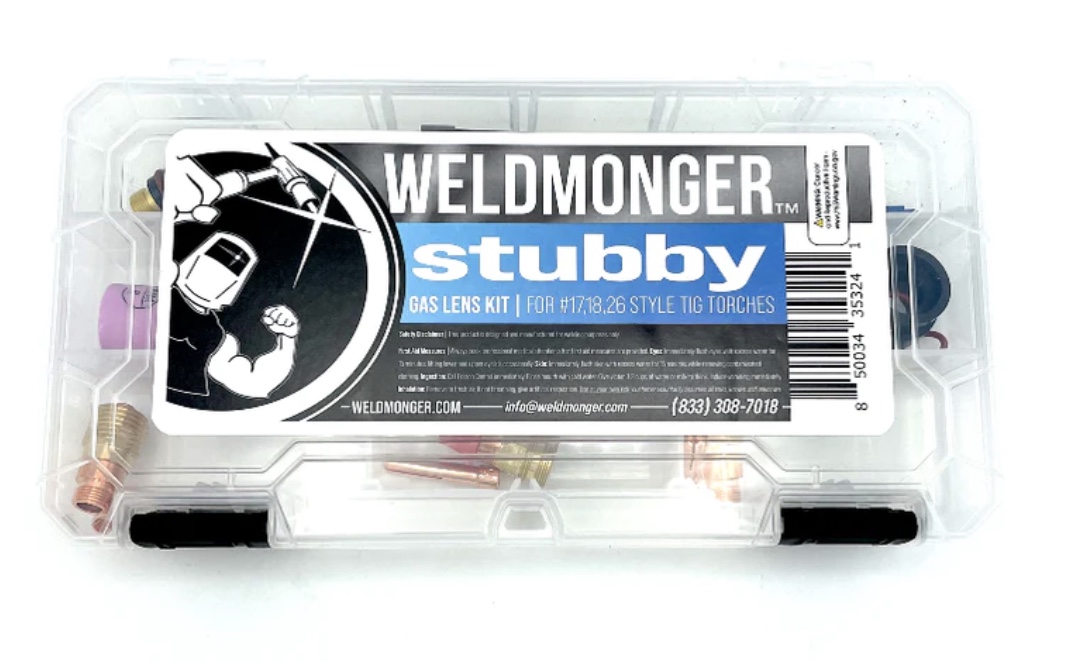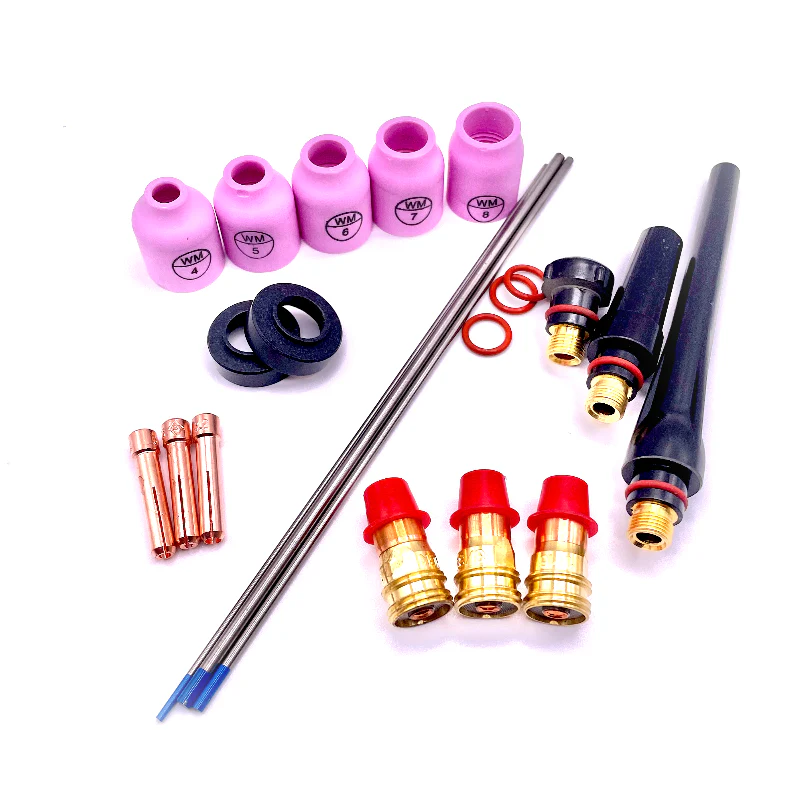AC Frequency Settings for TIG Welding Aluminum
2 Applications for different AC frequency settings
This video shows 50hz for a wide bead with good heat input...along with 110hz for thin aluminum
In both of these videos, I am using a TIG welder that is capable of AC frequency settings between 20hz and 250hz.
Its a CK Worldwide MT200 AC/DC welder.
The question is this...
If a TIG welder has AC frequency adjustment ranging from 20 to 250hz...
When do you use low frequency settings and when do you need high frequency settings?
According to manufacturers specs, high AC frequency settings focus the arc better. But is it that simple?
Lets see what happens when we keep everything the same except for AC frequency and weld some beads on .070" wall tube.
50hz vs 250hz
Watch this Previous video with more info about Frequency settings for tig welding aluminum
For this experiment Tig welding aluminum a different frequencies I set the machine to 90 amps and left that alone.
The only thing I changed was amperage.
The thickness of the aluminum being welded in the video is .070" (1.8mm).
I used a turntable welding positioner to keep the travel speed constant and propped my torch on a prop to keep everything somewhat automated.
The first bead was welded at 50hz and I could tell I was penetrating all the way thru by the way the puddle sunk after each dab.
Then I increased the frequency to 250hz leaving everything else the same.
At 250hz, there was zero evidence of penetration on the back side of the 8" aluminum tubing.
The difference in low frequency and high AC frequency settings

There is a loss of energy at higher ac frequency settings.
I am not sure why but it happens.
Back when I sold my Miller syncrowave 250 and bought a miller dynasty 200dx, I learned that lower frequency settings helped when tackling a job that maxed out the amperage of my machine.
There were jobs around .250" (6mm) thick where I learned very quickly that low ac freq settings helped get more heat input.
So here is the basic rule of thumb when it comes to AC frequency settings as I see it.
For thick aluminum, or if you are limited by the amperage rating of your machine, a lower frequency can get you out of a jam.
For thinner aluminum, or when doing build up on an edge of thin aluminum, the higher ac frequency settings can be useful.
And here is another golden rule of thumb...
if you have enough amperage, an AC frequency setting of 100-120hz is a really good all around setting for most anything.
I will follow up this page with examples of where lower ac frequency settings are called for as well as some examples where high ac freq settings work.
I am still learning every day and I hope you are too.
I learn something every time I make a video because I see things during the edit process that I dont always notice while welding.
















